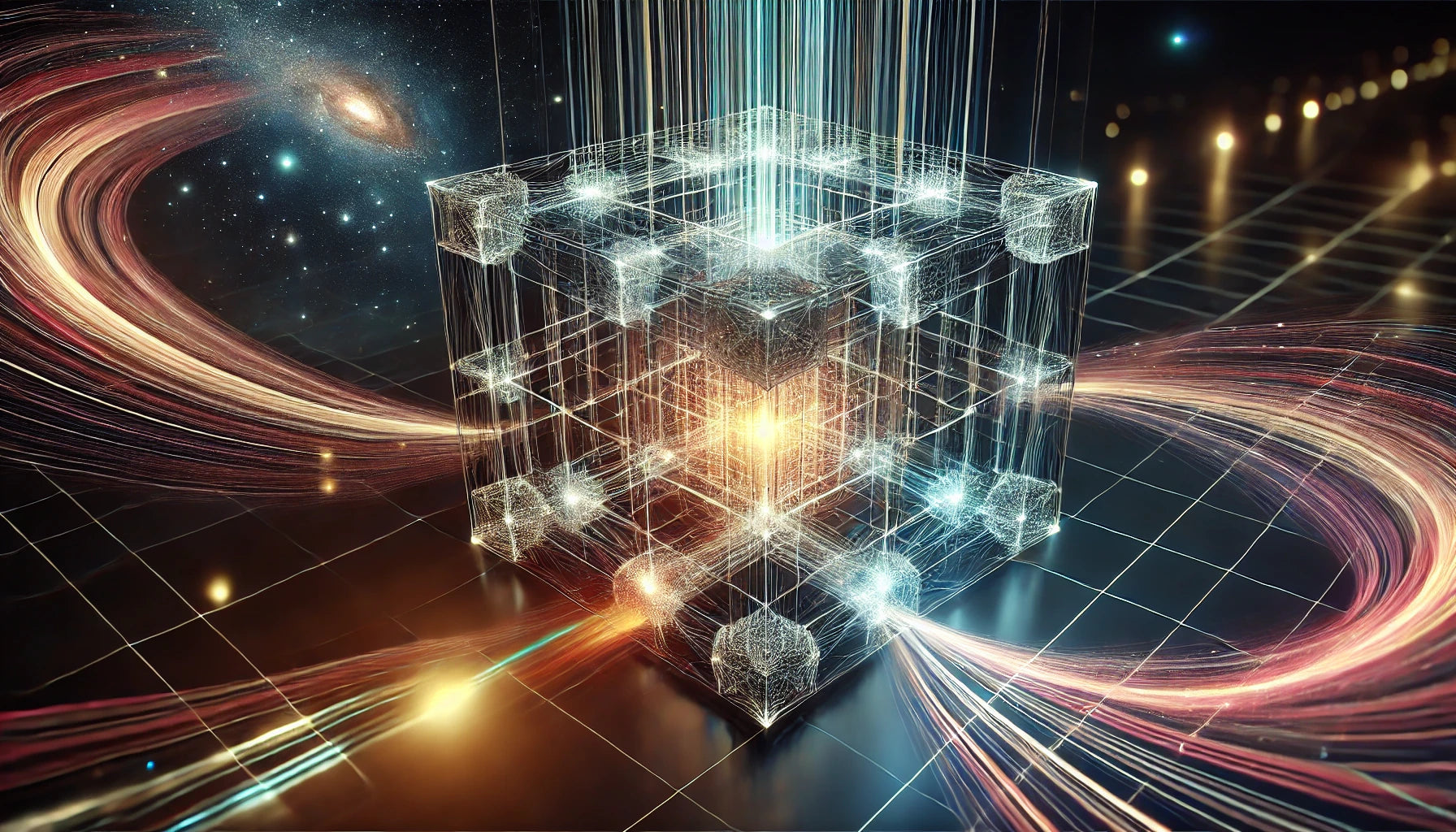
4th dimension 1
The fourth dimension is a fascinating concept, often described as a spatial dimension beyond the three we experience (length, width, and height). It challenges our understanding of reality because humans are biologically and neurologically wired to perceive the world in three dimensions. However, with training and tools, humans might develop the capacity to understand, "visualize," or conceptualize higher dimensions in indirect ways.
1. What is the Fourth Dimension?
- Mathematically: The fourth dimension is an additional axis perpendicular to the three dimensions we know. For example, in 3D space, you can move left/right, up/down, and forward/backward. In 4D, there’s a new direction—often referred to as "ana" and "kata"—that is orthogonal (at a right angle) to the three spatial axes.
- Physically: In physics, the fourth dimension is often considered time, combining with the three spatial dimensions to form spacetime (Einstein’s theory of relativity).
- Conceptually: A 4D object like a tesseract (4D hypercube) is incomprehensible to our senses but can be projected into 3D, much like a 3D object casts a 2D shadow.
2. Can Humans See the Fourth Dimension?
Directly perceiving the fourth dimension is not possible due to biological limitations:
- Eyes and Brain: Human eyes are adapted to detect light and form images in 3D space. Our brains then interpret this data to give us depth perception, but they can’t process a fourth spatial axis.
- Dimensional Reduction: Just as a 2D being can’t see the entirety of a 3D object, we can’t perceive the full form of a 4D object.
3. How Can Humans Train to Understand the Fourth Dimension?
While direct perception may not be possible, humans can train their minds to conceptualize and "visualize" the fourth dimension in creative and indirect ways:
A. Visualization Techniques
-
Start with Projections:
- Understand how a 2D shadow of a 3D object works (e.g., a cube’s shadow is a square).
- Imagine the 3D "shadow" of a 4D object like a tesseract—this is how we see 4D shapes projected into 3D space.
-
Practice Mental Rotation:
- Visualize rotating a cube in 3D, then imagine how a 4D object might rotate in 4D space. This involves imagining connections that "pass through" each other.
B. Mathematical Understanding
- Learn about higher-dimensional geometry and topology to build a conceptual framework.
- Study objects like the tesseract or 4D polyhedra, which are mathematical representations of higher-dimensional shapes.
C. Use Technology
-
Virtual Reality (VR):
- VR simulations can represent 4D objects as 3D projections, allowing you to interact with and "explore" them in a way that makes them feel tangible.
-
Interactive Visualizations:
- Tools like 4D geometry simulators help you understand how 4D objects behave when viewed in 3D.
D. Intuition Training
-
Meditation and Expanded Awareness:
- Some believe that meditation or altered states of consciousness can help individuals "sense" higher dimensions, even if they can’t see them.
-
Practice Seeing Connections:
- Train yourself to think of relationships and patterns as interconnected in non-linear ways. This mimics the 4D concept of multiple simultaneous connections.
4. Are There People Who "See" Higher Dimensions?
Some individuals claim to have experienced higher dimensions through:
- Altered States: Psychedelics, deep meditation, or lucid dreaming might temporarily shift perception, creating a sense of higher-dimensional awareness.
- Intuitive Insights: Mathematicians, physicists, and artists often describe moments of "intuitive understanding" of higher dimensions, even if they can’t literally see them.
These experiences are subjective and likely involve the brain’s creative and abstract processing capabilities rather than actual fourth-dimensional perception.
5. How Would Seeing the Fourth Dimension Change Perception?
If humans could perceive the fourth dimension:
- Objects: We would see all sides, angles, and even the insides of 3D objects simultaneously.
- Time: We might perceive past, present, and future as a single continuum, rather than as a sequence of moments.
- Space: The concept of "distance" would be radically different, with 4D shortcuts allowing objects to connect in ways that seem impossible in 3D.
6. Why Does It Matter?
Training to understand the fourth dimension:
- Expands Perspective: Thinking beyond 3D encourages creative and abstract problem-solving.
- Deepens Curiosity: Exploring higher dimensions sparks curiosity about the universe and our place in it.
- Breaks Mental Limits: Learning to think in 4D forces the mind to break free from rigid, linear thinking, opening new possibilities in art, science, and philosophy.
The Takeaway
While humans can’t literally "see" the fourth dimension, we can train ourselves to conceptualize it through visualization, mathematics, and creative thinking. Tools like VR and simulations make these concepts more tangible, while meditation and mindfulness may offer intuitive glimpses of what higher-dimensional perception could feel like.
Ultimately, understanding the fourth dimension is less about physical sight and more about expanding your mental framework to embrace a broader, interconnected view of reality.

